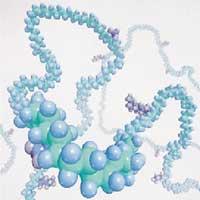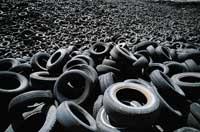The remains of polymer monomer

Polymers are giant molecular structures formed by the union of small molecules. Polymers, known as plastics, latex, paints or glues, are some of the elements we use in everyday life.
Polymers can be made in three ways:
- In mass: the monomer (small molecules used in the synthesis of polymers) is added the initiator and the polymer is obtained by reacting.
- By dissolution: monomer, initiator and organic solvent are mixed. The final result of this process will be polymer and solvent. The solvent is a contaminating element.
- Dispersion in water: is polymerization by emulsion. This process involves four components (monomer, initiator, emulsifier and water). The solvent is replaced by water and the components are dispersed in water. The main advantage of this way of making polymers is that the reaction phase, that is, the dissolution of the emulsifier is done in the water.

In emulsion polymerizations, unfortunately, the polymerization of all monomers is not achieved and the latex obtained contains remains of monomers and volatile organic compounds. For example, acrylic monomers used in latex paints, in addition to their bad odor, are contaminants. To address this problem, researchers from POLYMAT (University Institute of Polymer Materials of the University of the Basque Country/Euskal Herriko Unibertsitatea) initiated a project to reduce the remains of monomers thanks to a European grant received four years ago and, if possible, to eliminate them completely. Three other universities from Germany, Switzerland and Greece have collaborated in this work, as well as four foreign companies.
Pollutant waste disposal test
POLYMAT researchers have used two monomer waste disposal processes and volatile organic compounds: post-polymerization and desivaporization.
Postpolymerization
Once polymerization is completed, more initiators are added so that leftover monomers react. However, in this process only monomers can be removed. On the other hand, it is cheaper than the second process, since in one reactor you can do everything.Devolatilization is
a process that eliminates volatiles (the English call it devolatilization). Vacuum and heat can eliminate possible remnants of monomers and volatile organic compounds. The desivaporization process is more expensive as it requires more tooling. In the case of latex, for example, the emulsifier they contain can be deorbed (detached from latex), resulting in a large amount of foam and the coagulation of the polymer.

So far, POLYMAT researchers have studied vinyl and acrylic latex, widely used in paints and adhesives, as well as industrial latex of great interest to the industry. Laboratory cans have very few polymers and plenty of water. Those used in the industry are much more concentrated and contain more polymers.
The Donostian researchers have obtained the best results by mixing monomer residues and two processes of disposal of volatile organic compounds. If equipment is available to perform the volatile removal process, a little initiator is added and both the monomer and volatile organic components disappear in a very short time.
Thanks to this successful research, on the one hand they have managed to understand the process and have developed a mathematical model. Consequently, the process has been achieved and optimized in the most appropriate way. For example, in the post-polymerization process it is difficult to know how many initiators should be thrown, as it can change the properties. In addition, it is very important to know the time during which the initiator should be thrown. Through the mathematical model they have forgotten all these headaches and are able to solve problems of different level.

On the other hand, they have managed to be well below the amount of monomers that the legislation marks. In fact, the legislation establishes a maximum amount of monomer for each system, but POLYMAT researchers have achieved what the industry demands. Although to date the companies of the Basque Country have had low demand (due to the shortage of polymers in the Basque Country), from Spain they have had several companies (one from Girona and one from Granada). Most companies ask them to measure the remains of monomers left in their products. In cases where the amount of these waste was higher than that required by law, POLYMAT has helped several companies reduce that amount.
Three scientists have worked for four years on POLYMAT research. Currently we continue to work on the same topic but with a new working methodology. From now on they want to work on a method to develop more global issues related to the environment.





